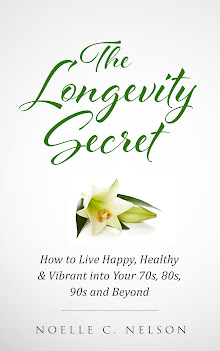And that is the question I invite you to ask yourself this
New Year, as you make your New Year’s resolutions: Why not your biggest dream?
Your dearest wish? Your fondest hope?
Why settle for “I will lose 20 pounds this year” when what
you really want is a vibrant, healthy, strong body that just happens to also be
20 pounds lighter? Why settle for “I will get a new job” when what you really
want is a job that’s a terrific fit for your skills and talents with a paycheck
that rewards you accordingly?
You see, it’s hard to muster up the passion, enthusiasm and
persistence it takes to realize your New Year’s resolutions when they’re
lackluster. They need luster! Brilliance! Shine! How else are you going to
commit to something that will take persistence and perseverance?
Yes, you do have to map out the steps to getting there. For
your “vibrant, healthy, strong, 20 pound lighter body” you must figure out the
diet and exercise plan that will allow you to fulfill your goal. In addition to
a new mental conditioning that includes, in all likelihood, mindfulness and
meditation, positive affirmations and the like. Probably also setting up a
buddy system for yourself, so that you have the support you need along the way.
Will you be motivated to do all that just to lose 20 pounds?
Not to mention the day to day focus that it takes! Maybe. But there’s a lot
more pulling power towards your goal when you are aiming for what you really want: vibrant, healthy, strong
and 20 pounds lighter.
The same thing applies to your “I will get a new job”
resolution. Nice, but will your resolution sustain you through figuring out the
skills you need to acquire or hone, finding the money, time and
seminars/classes you need? Then through the resume process, the hunt for the
right job process, the spiffing-yourself-up process, and everything else it
takes to get a new job. Isn’t it far more inspiring to go for a “terrific job
that’s a terrific fit with terrific pay” resolution (and why not add “terrific
boss and terrific co-workers” to your resolution as well?!).
Why not? As W. Clement Stone famously said: “Always
aim for the moon, even if you miss, you'll land among the stars.”







